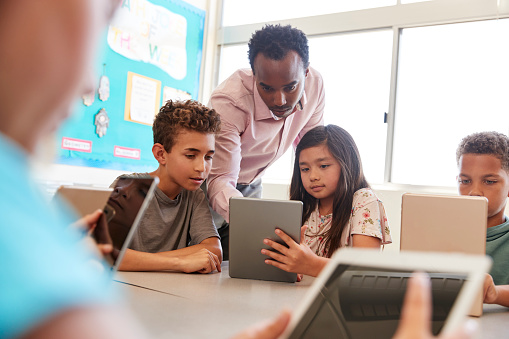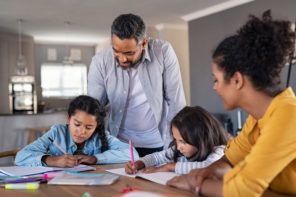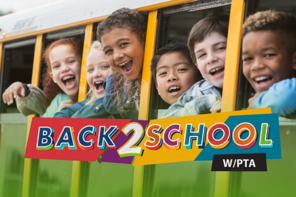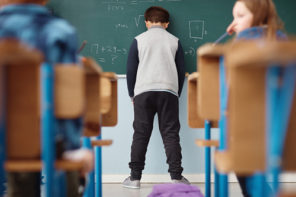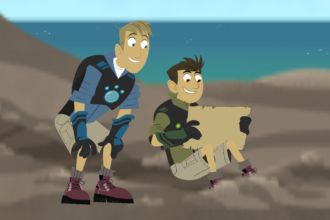As we learn more about the way we learn, it’s clear that education’s old “one size fits all” approach doesn’t actually fit all, or even most. With that in mind, many districts and schools are making the necessary move toward student-centered, personalized learning approaches to increase student success.
According to a report by the U.S. Department of Education’s Office of Educational Technology, Future Ready Learning: Reimagining the Role of Technology in Education, personalized learning allows teachers can modify lessons to meet the individual needs of students—turning the standard material into activities that are meaningful and relevant to learners, driven by their interests and often self-initiated.
Although it has many benefits, some teachers shy away from personalization because of its complexity. It can be hard for a teacher to make sure they’ve accounted for all the factors that make personalized learning truly personal. Pairing students with individual content is a good start, but it’s often not enough to see a real difference. That’s where digital tools come in.
Benefits of Digital Learning Tools
Digital tools and resources allow students to create content, participate in online lessons and courses that may not otherwise be available otherwise, and collaborate with experts or other students remotely. These tools make personalized learning easier, more accessible and more seamless. By using student data and information, administrators and teachers can create personalized learning plans for students, and then assess the effectiveness and progress of the students in real time.
A recent study by the Rand Corporation, How Does Personalized Learning Affect Student Achievement? suggests that personalized learning can improve any student’s achievement, regardless of their starting level of achievement. Digital learning opportunities are no longer just a perk available to advanced students, they are a must-have for all students, regardless of learning speed. Here are a few great examples of how schools and communities are implementing personalized learning in digital learning environments to best prepare students for college and the workforce.
The Impact of Digital Learning
In 2011, Massachusetts’ Burlington Public-School District launched a 1:1 Learning Program (one mobile device per student) to provide students with learning environments that mirror real-world working environments in the digital age. Educators have seen an impressive shift in student engagement since then, with increases across all grade levels and in all content areas.
Students report that having access to a 1:1 mobile learning device is not only a dynamic catalyst for learning, but an extraordinary tool for organizing their academic and extracurricular lives. Class structures have shifted from focusing on traditional methods of lecture and assessment, to project-based and blended-learning models. Burlington is in the process of shifting all schools to a digital learning environment with some fully-digital classes at the high school level.
Meanwhile, in Indiana, the Metropolitan School District of Wayne Township is using personalized learning digital tools to improve its graduation rate. With a free and reduced-lunch rate of 78%, the district has prioritized using engaging and effective digital content to ensure that all its students have access to personalized learning opportunities that meet their specific educational needs.
Providing every student with seamless and reliable access to accelerated learning opportunities—such as individual laptops for each student, and asynchronous and synchronous online coursework—has enabled Wayne’s students to cultivate their own learning pathways. It’s had an impressive effect. In 2006, Wayne’s graduation rate was 65%. In 2016, it climbed to more than 94%.
Get Started Going Digital
So, how can your school make the leap to personalized instruction supported by digital learning? The answer is planning, planning, planning! Work with your administrators, teachers, other parents and community leaders to identify learning goals and gaps in your school. Read up on student-centered learning models to see what has been successful for other schools in the past, and what may work best for your child.
All students should get the opportunity to engage in dynamic learning activities. Let’s work together to give every child the engaging and powerful learning experiences they need to succeed in the digital age.
Ready to Start Tapping Tech? Use These Resources
Blended & Personalized Learning at Work
Learn the key components of highly-personalized, mastery-based blended learning and what it takes to implement and scale personalized digital learning.
Transformative Digital Learning: A Guide to Implementation
This free, web-based tool produced by SETDA for school and district leaders offers a host of resources to ease the transition to digital learning.
Future Ready Schools
A website dedicated to helping school districts maximize digital learning opportunities to prepare students for success in college, careers and citizenship.
Christine Fox is the Deputy Executive Director for the State Educational Technology Directors Association (SETDA), charting the nonprofit’s strategic direction, administration, planning and financial decisions.

